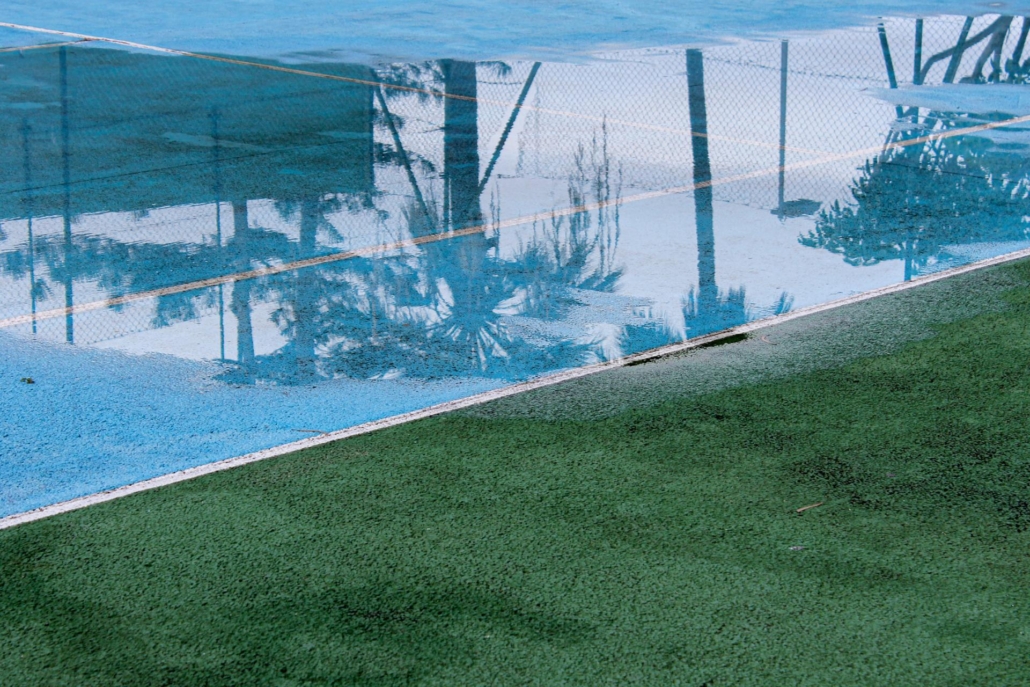What is Blue Turf and Why is it Popular


Walk into Albertsons Stadium in Boise, Idaho, and the first thing anyone notices isn’t the scoreboard or the crowd. It’s the field itself, a brilliant, almost shocking shade of blue that looks like someone colored outside the lines of traditional sports design.
Blue turf started as Boise State’s quirky branding experiment in the 1980s. Now it’s a legitimate trend in athletics, recreation, and residential landscaping. The bright surface turns heads, but there’s more to this story than simple aesthetics.

This is artificial turf that’s been dyed blue during manufacturing instead of the standard green. The process isn’t complicated. Blue dye gets mixed into the plastic fibers first, usually polyethylene or polypropylene. Those dyed fibers then become the individual grass blades.
These blades get tufted into backing material, then filled with rubber or sand for cushioning. The result? A playing surface that performs like any quality synthetic field but stands out visually in ways green never could.
Whether someone wants turf blue like Boise’s, standard green, or something completely different, the technology has improved dramatically. Better UV stabilizers keep colors vibrant longer. Improved drainage systems prevent water pooling. Manufacturing keeps evolving.
Gene Bleymaier had a problem in 1986. As Boise State’s athletic director, he knew the university needed something distinctive, some way to punch above its weight class in crowded college football.
The school was already planning to install artificial turf at Albertsons Stadium. Standard green would work fine. But Bleymaier asked a different question: why not make it blue to match the school colors?
The manufacturer said yes and Boise State went for it.
They became the first college program in America to play on anything other than green. Critics thought it was gimmicky. But television cameras loved it, and suddenly everyone was talking about Boise State football. The “Smurf Turf” became famous, helping build a national brand that persists decades later.
Branding power explains much of the appeal. A colored field creates instant visual recognition that green simply cannot match.
Schools using blue turf report tangible recruiting advantages. High school athletes remember that distinctive field when weighing scholarship offers. It’s memorable and different.
Fans love it too. The unusual playing surface creates a sense that something special is happening. Media coverage has increased since broadcasters naturally focus on what makes a venue unique.
Does it improve athletic performance? No. But it improves everything around athletics. The marketing, the excitement, the recruiting, the attention. Sometimes perception matters as much as function.
Boise State sparked a movement, though not every school went with blue. Eastern Washington installed bright red turf. Central Arkansas chose purple and gray stripes.
High schools jumped in too, particularly in Texas and other states where football carries serious cultural weight. Some chose turf in blue to match school colors, while others picked red, purple, or teal. The trend expanded beyond athletics entirely. Playgrounds use different colors now to mark off activity zones.
Then homeowners caught on. Colored artificial grass products aren’t limited to traditional green anymore. Pet owners pick colors that hide stains better or match their landscaping. Pool areas? People coordinate turf with their patio furniture, outdoor tile, whatever works with the design.
Desert climates love this trend. Dry regions need water-saving options that still look good. Dead brown grass looks terrible. Standard green synthetic works but feels boring. Blue, red, or other bold colors? They can actually enhance outdoor spaces and tie into home design.
Every major purchase has trade-offs. Artificial grass in Las Vegas has proven itself reliable, but it’s still worth knowing both the benefits and limitations of blue artificial turf.
The upside:
The downside:
Here’s something that doesn’t get mentioned enough: installation quality matters more than color choice. Shoddy work on blue artificial turf creates worse problems than a well-installed green field ever would. These determine success or failure. Color just determines whether people remember the place.
One athletic director’s gamble in 1986 turned into a nationwide phenomenon. Blue turf proved something simple: playing surfaces don’t need to be green just because they’ve always been green.
More than anything, the practical benefits matter. Artificial turf fields last longer, need less work, and slash water bills. There’s also the branding angle, which is the way a colored field sticks in people’s memories long after they’ve forgotten the score. As technology improves and color options expand, expect more schools, parks, and homeowners to make the switch.

Festival Turf
Phone: 844-702-8873
Email: [email protected]
Las Vegas HQ Hours
Monday-Friday: 8:00am – 4:00pm PST
Saturday: 8:00am – 12:00pm
Sunday: CLOSED

 Poly Board Edging for Artificial Turf: How to Install one?
Poly Board Edging for Artificial Turf: How to Install one?